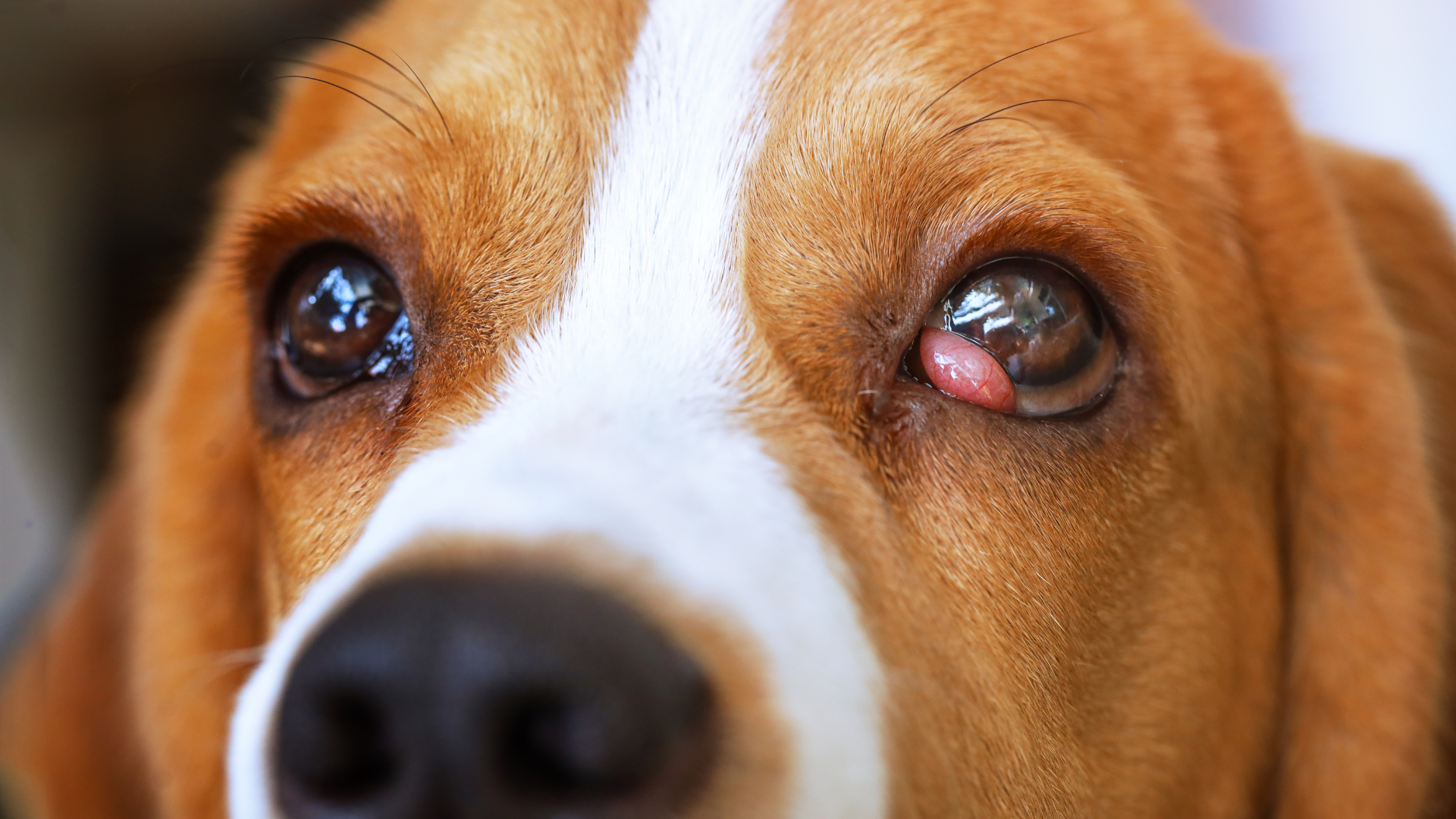What is cherry eye in dogs? A vet explains
Here's what you need to know about cherry eye in dogs.

Cherry eye in dogs can be a concerning condition as it can look very angry and uncomfortable. Many animals have three sets of eyelids (so do humans, but ours are much smaller) and the tear gland in that third eyelid can become blocked in dogs (and rarely in cats).
This gland will then swell and pop out in front of their eyeball, leading to a red, cherry-like swelling that looks like an abscess. Dogs with looser skin around their eyes or shallower eye sockets seem to be more prone, and it tends to occur more often in dogs in their first year. If you're wondering, 'Why are my dog's eyes red?' this could be the answer.
I spoke to Dr. Kelly Hood, a vet who also represents Pet Portraits, and asked her what owners should look for and how this condition can be treated.
What is cherry eye in dogs?
“Cherry eye is a common eye condition in dogs where a gland in the third eyelid pops out and swells up, making it look like a red, swollen ‘cherry’ in the corner of the eye,” says Dr. Hood. “It can be kind of uncomfortable for the dog.”
If you’re familiar with the term, cherry eye is technically a prolapse of the third-lid gland. These prolapses can look like an abscesses, so it’s important to go to your vet and get your dog properly assessed to rule out other conditions.
What are the symptoms of cherry eye in dogs?
“The main sign is seeing the red, swollen mass in the lower corner of the dog’s eye. It may also cause eye irritation, resulting in lots of tearing with the dog squinting and seeming bothered by it,” says Dr. Hood.
When untreated, cherry eye can cause further issues for your pooch, such as conjunctivitis or corneal ulcers. Your dog needs the tear production of this little gland and will develop dry eyes if it is out of action. Blindness can result from these conditions so it is important to seek treatment as soon as you notice cherry eye developing.
Get the best advice, tips and top tech for your beloved Pets
How do you treat cherry eye in dogs?
“The typical treatment for cherry eye is surgery to put the gland back in its normal spot and keep it there. This usually works well, though it does require general anesthesia,” explained Dr. Hood. “In milder cases, your vet may first try other options like eye drops or temporary stitches to put the gland back. However, surgery is usually the best long-term fix. Surgical removal of the gland is not recommended as it could result in chronic dry eye.”
There is a risk that the same gland will prolapse again, but usually, if cherry eye reoccurs it will be in the second eye.

What causes cherry eye in dogs?
“We’re not totally sure what causes cherry eye, but it seems to be related to a weakness or defect in the tissue that holds the gland in place,” says Dr. Hood. “Certain breeds, like Bulldogs, Cocker Spaniels and Beagles are more prone to getting it or dogs that have shallow eye orbits in their heads.”
How is cherry eye in dogs diagnosed?
It is important to take your dog to the vet when you notice any issues with their eyes, as many untreated eye conditions can lead to blindness, which will be life-impacting for your dog. While the cherry eye is unlikely to cause blindness on its own, subsequent conditions caused by the cherry eye or infection might, so you must take your dog to the vet.
Dr. Hood says: “A vet exam is necessary for a definitive diagnosis and it’s usually pretty easy for vets to identify just by looking at the dog’s eye and seeing that distinctive red mass. They may do some other tests to check for things like infection but the appearance is the main diagnostic sign.
“It’s important to know that even though the condition is recognized by its distinctive appearance, a vet can rule out other potential causes and confirm the diagnosis, so always check with your vet."
You might also want to learn about eye discharge in dogs and the best pet insurance.

Dr. Kelly Hood began her vet journey as a kennel assistant, eventually graduating from North Carolina State Veterinary College. Now practicing small animal general and urgent care in Hampton Roads, she's also an in-house expert at PetPortraits.com, sharing her vet advice.
Lou is an experienced writer and keen dog lover who works at PetRadar's sister site, LiveScience. When Lou isn't covering health and fitness, she's busy spending time with her family dogs or growing all kinds of veggies and flowers on her allotment.
